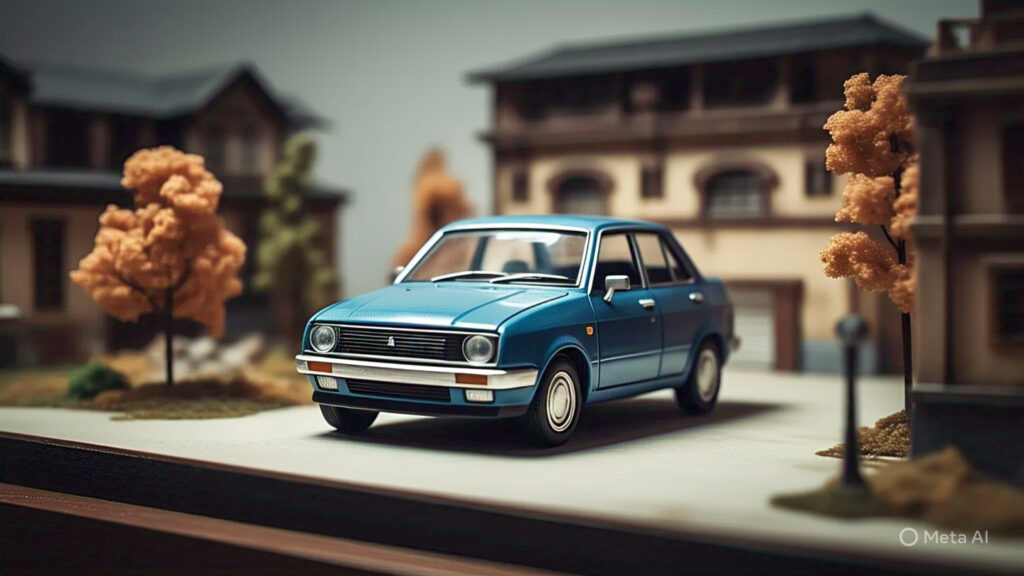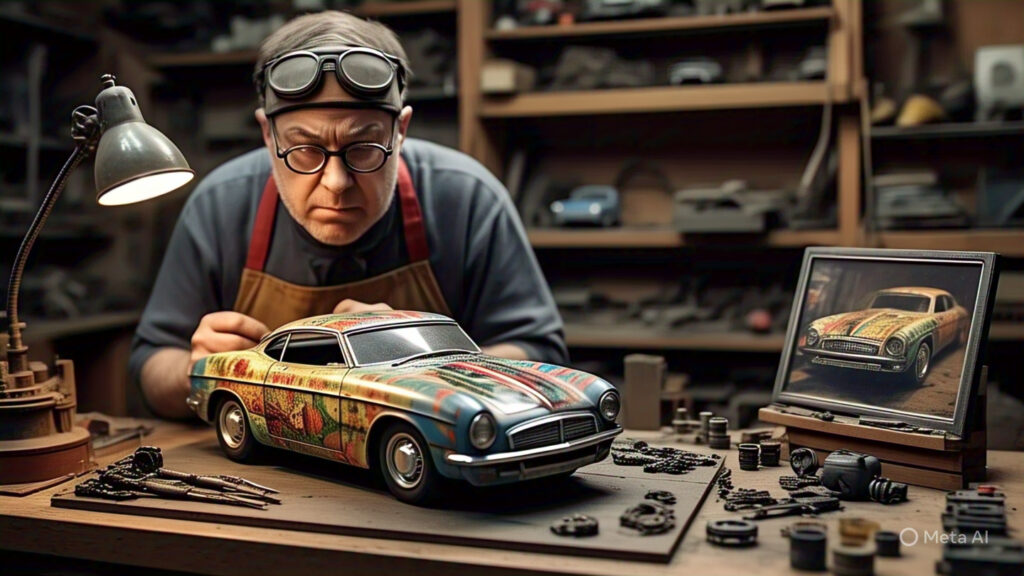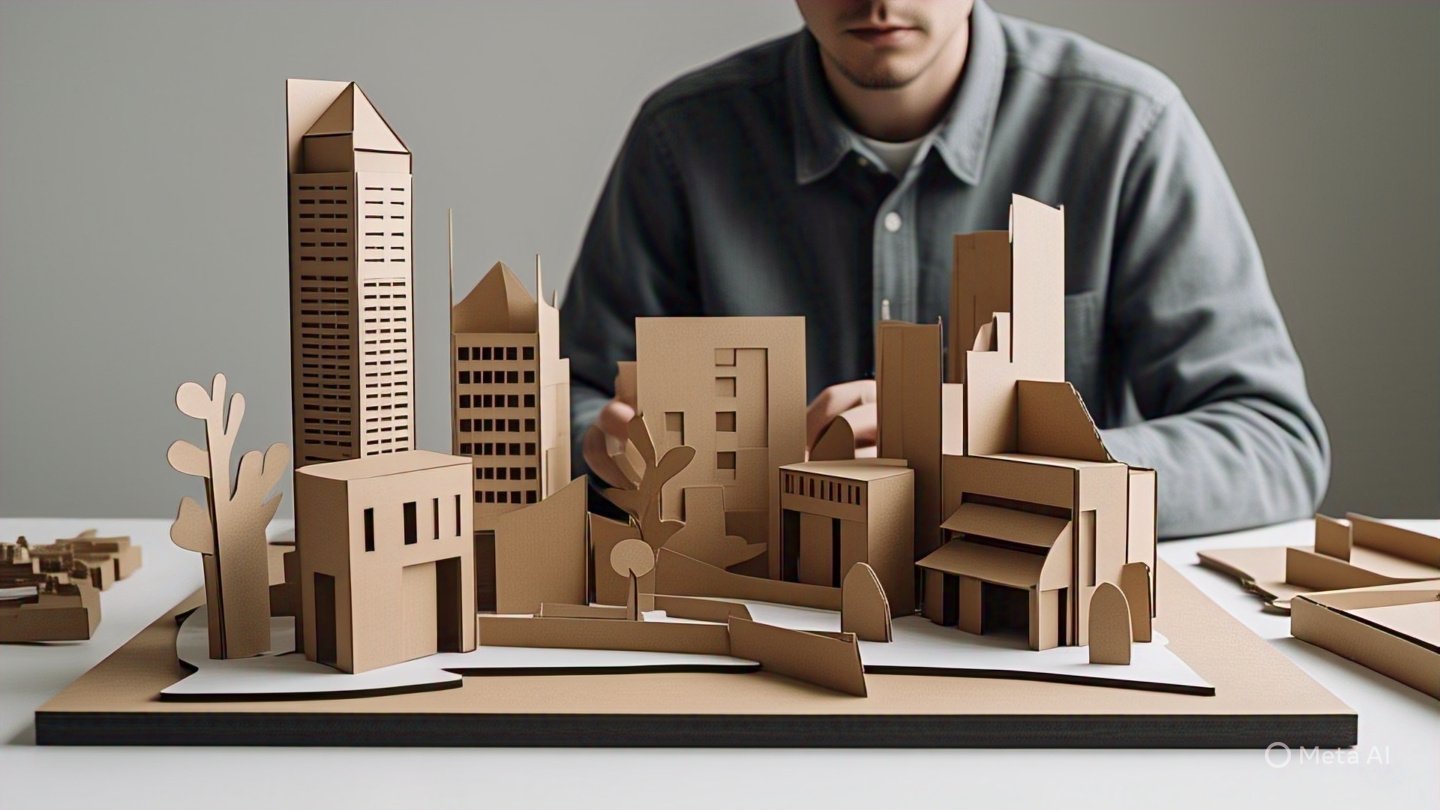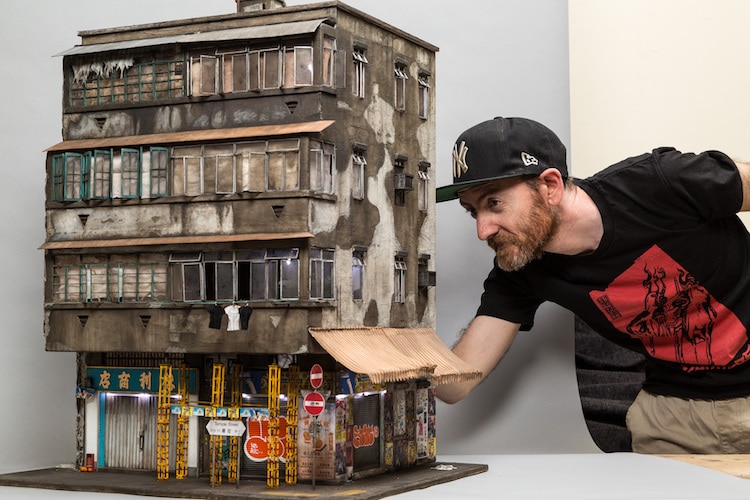Understanding Dioramas
Dioramas are three-dimensional models that represent a scene or depict a story, often created within a confined space such as a box or a frame. They serve as a powerful medium for representation across various fields, including art, education, and history. As artistic constructs, dioramas invite viewers to engage with the narrative presented, offering a unique perspective on the subject matter.
In art, dioramas can range from highly realistic landscape representations to abstract interpretations, pushing the boundaries of creativity. Artists often use dioramas to evoke emotions and tell stories that might be difficult to illustrate through traditional painting or sculpture. By integrating various materials and textures, these representations allow for a multifaceted exploration of themes, making the experience immersive for the audience.

In the field of education, dioramas serve as effective teaching tools, facilitating visual learning. They can transform complex concepts into tangible representations, enhancing students’ understanding of topics such as geography, biology, and history. For instance, a diorama illustrating an ecological habitat can help students visualize interactions within an ecosystem, while a historical diorama can recreate pivotal moments, providing context in a more engaging manner.
Dioramas also play an essential role in historical preservation and teaching. Museums frequently showcase dioramas that recreate significant historical events or lifestyles of different eras, aiding visitors in grasping the context of the past. Additionally, hobbyists and enthusiasts create dioramas in various scales, such as model railroading and military displays, each with its unique characteristics and themes.
Overall, dioramas can be categorized into different types, including natural dioramas, historical dioramas, and marine dioramas, each form emphasizing distinct elements of storytelling. Their capacity to encapsulate a narrative within a three-dimensional frame makes dioramas a noteworthy approach to representation across diverse disciplines.
The Importance of References in Diorama Making
Creating a diorama is a meticulous process that requires not only creativity but also a substantial understanding of the elements being depicted. One of the fundamental steps in this journey is gathering references. These references can encompass various sources such as photographs, illustrations, and real-life observations, all of which play a crucial role in the successful execution of a diorama project.

The primary benefit of using references is that they aid in conceptualizing the scene. By studying different aspects of the setting, the artist can better understand the spatial relationships, lighting, and textures that will ultimately contribute to the overall composition. This foundational understanding allows for a more coherent and immersive diorama, as it ensures that each element is in alignment with the reality being represented. Furthermore, references can serve as inspiration, sparking ideas on how to creatively portray a scene while staying true to its essence.
In addition to guiding the artistic vision, references are invaluable when it comes to selecting appropriate materials. Knowing the right textures, colors, and shapes that exist in the real world enables the creator to make informed decisions about which materials to use. This leads to an enhanced tactile experience and visual fidelity in the final product. Whether it be a miniature landscape or an urban scene, the accuracy achieved through proper references can elevate a diorama from a simple model to a revered work of art.
Moreover, references enhance the creativity of the project. By providing a rich array of elements to draw inspiration from, they open up avenues for innovative expression. Ultimately, references serve as a cornerstone in the diorama-making process, ensuring that artists are well-prepared to create captivating and authentic representations of their chosen subjects.
Types of References to Consider
When embarking on a diorama project, it is essential to gather references that will facilitate the creation process. There are several types of references that can enhance the accuracy and creativity of your diorama, including visual references, textual references, and real-life observations. Each category offers unique contributions to the overall diorama-making experience.
Visual references, such as photographs and illustrations, are invaluable tools for understanding color palettes, textures, and spatial relationships. High-quality images from various angles provide insight into details that might be overlooked otherwise. For instance, if you are depicting an urban scene, photographs will help you capture the essence of buildings, vehicles, and human figures. Additionally, illustrations can represent stylized interpretations or artistic renditions that inspire your own creative vision while ensuring you maintain a sense of realism.
Textual references, including books, articles, and online resources, play a significant role in providing historical context or technical knowledge relevant to your diorama’s subject matter. These resources can illuminate the cultural significance of a particular scene or offer tips on materials and techniques that can enhance your work. For example, consulting texts on historical architecture can prove essential when aiming for accuracy in depicting a specific time period or style in your diorama.
Real-life observations are another critical source of references. Visiting relevant locations allows you to experience the nuances of a scene firsthand, providing a deeper understanding than visual or textual references alone. Observing light conditions, sounds, and even scents in situ can inspire a more immersive diorama that resonates with authenticity. Engaging with the environment creates an opportunity to capture subtleties that might otherwise escape notice and inform your artistic choices.
Where to Find Visual References
Finding high-quality visual references is crucial for creating accurate and compelling dioramas. Numerous platforms and resources can be utilized to source these references effectively. Online databases and repositories are among the first places to consider. Websites such as the Digital Public Library of America and Europeana offer vast collections of images, documents, and artworks that can serve as inspiring references for various themes and settings.
Museums and libraries also play an important role in providing visual references. Many institutions now have digital archives, allowing individuals to access high-resolution images of their collections online. The Smithsonian Open Access initiative is a prime example, where the public can freely access thousands of images that depict objects spanning different cultures and eras, adding depth and authenticity to your diorama.
Social media platforms, especially Pinterest and Instagram, have become significant sources for visual inspiration. By following artists, photographers, and themed accounts related to diorama-making, you can discover diverse interpretations and techniques. Creating mood boards on Pinterest allows for easy organization of found images, which can streamline the conceptualization process when building your diorama.
Photography websites like Unsplash and Pexels provide a wealth of high-quality and royalty-free images. These resources often feature professional photography of landscapes, urban scenes, and intricate details that can elevate the realism of your project. However, it is essential to critically evaluate the quality and relevance of the images found. When choosing references, consider factors such as image resolution, clarity, and the context in which the subject is presented. Always aim for images that are detailed and appropriately lit, as this will significantly impact the outcome of your diorama.
Utilizing Textual References
When embarking on the creative journey of constructing dioramas, the importance of utilizing textual references cannot be overstated. Textual references encompass a range of materials, including books, scholarly articles, expert interviews, and online forums, each serving as a vital resource for enhancing one’s understanding and execution of diorama projects. By engaging with these different forms of literature, creators can obtain crucial historical context, technical specifications, and artistic inspiration necessary for crafting a compelling diorama.
Research through books and articles offers insights into the subject matter of the diorama, allowing creators to immerse themselves in the details and stories surrounding their chosen theme. Whether employing historical texts that detail significant events or fiction that sparks the imagination, these resources provide a backdrop that elevates the authenticity and appeal of the diorama. Furthermore, expert interviews can be especially beneficial, as they often yield first-hand accounts and nuanced perspectives that deepen one’s comprehension of the topic, thus improving the overall quality of the diorama.
In addition to traditional resources, online forums present a contemporary platform to exchange ideas and gather opinions from fellow diorama enthusiasts. Participating in these digital communities allows creators to solicit feedback and gain insights from experienced builders, which can vastly improve one’s skills and techniques. Moreover, many participants share their creative processes, challenges faced, and solutions implemented, all of which contribute to a richer understanding of diorama-making. Ultimately, integrating textual references into the diorama creation process enriches the artist’s vision and outcome, ensuring that each piece is not only visually appealing but also contextually resonant. By weaving together information from various textual sources, diorama creators can achieve a compelling narrative that captivates their audience.
Making Use of Real-Life Observations
To create a compelling diorama, utilizing real-life observations can significantly enrich the project’s authenticity and detail. Engaging with the environment related to your diorama’s theme allows for a deeper understanding of the nuances often overlooked in photographs or digital images. This experiential approach not only aids in crafting more realistic representations but also inspires creativity through genuine interactions with the subject matter.
Visiting locations relevant to your diorama theme—be it a natural setting like a forest, a historical site, or a busy urban area—can provide essential insights. Taking the time to observe the colors, textures, and scale of these real-world elements enables a diorama creator to replicate them effectively. Furthermore, paying attention to the subtle play of light in various situations will enhance the final presentation. For instance, noticing how shadows fall during different times of the day can influence the effect you wish to achieve in your diorama.
Additionally, taking notes and making sketches during your visit can serve as vital reference material. Documenting observations about specific plants, animals, or architectural features can inspire unique additions to your diorama. If you are working on a theme that involves crowd dynamics or bustling environments, observing people and their interactions will provide a wealth of information about movement and spatial relationships.
Incorporating these firsthand experiences not only enhances the accuracy of your diorama but also instills a personal connection to the work. Therefore, prioritizing real-life observations as part of your research process can significantly uplift the quality and originality of your final product. The ability to reflect real-world elements in your diorama enriches its storytelling potential, making it more engaging and relatable to viewers.
Organizing Your References Effectively
When embarking on the creative journey of building dioramas, having a well-organized reference system can significantly enhance your workflow. A methodical approach to reference management not only streamlines the creative process but also saves time during the construction phase. To begin, consider categorizing references based on thematic elements, color palettes, materials, or specific components relevant to your diorama. This foundational step allows for quick access to visual aids and inspiration that aligns with your project goals.
Digital tools have revolutionized how artists and hobbyists manage their references. Applications such as Trello, Google Drive, or Pinterest can serve as invaluable platforms for organizing visual content. Utilizing boards or folders within these applications facilitates easy categorization and keeps your references accessible across devices. By tagging images with relevant keywords, you enable swift retrieval of sources when inspiration strikes, minimizing the need to sift through vast collections of files. Moreover, many of these tools allow for collaboration, letting you share ideas with fellow diorama enthusiasts or receive feedback on your work.
For those who prefer a tactile approach, maintaining physical folders or binders can be equally effective. Classifying printed images and notes into labeled sections not only provides a tangible reference but also helps with the creative brainstorming process. Consider employing annotated notes or comments next to images to highlight key features or your thoughts regarding their application in your diorama. This practice will ensure that all vital information is readily available when you need it.
Ultimately, the choice between digital and physical organization methods should cater to your personal preferences and workflow strategies. Whether through digital platforms or systematic physical arrangements, an effective reference system is indispensable for elevating the quality and efficiency of your diorama-making endeavors.
Creating a Mood Board
A mood board serves as an invaluable creative tool in the planning phase of any diorama project. This visual collage brings together various elements such as images, textures, colors, and even textual components, providing a comprehensive representation of the aesthetic and narrative one wishes to convey. The process of compiling a mood board not only stimulates creativity but also fosters a more structured approach to diorama design.
To begin, one should gather inspiration from a range of sources, including books, magazines, and online platforms like Pinterest or Instagram. Collect images that resonate with the theme or concept you intend to explore. These could encompass photographs of natural landscapes, urban settings, or historical artifacts, depending on the diorama’s focus. By assembling these visuals, you can pinpoint the overall vibe that you wish to achieve in your representation.
In addition to images, incorporating textures is crucial for enhancing the dimensionality of your board. Textural elements might include fabric swatches, paper samples, or even natural materials such as sand or leaves. These tactile components can help in visualizing how different surfaces might interact within the final diorama, offering a tangible aspect that purely visual media cannot provide.
Color palettes also play a fundamental role in mood boards. Choose colors that align with the emotional tone of your diorama. For example, warm tones might evoke feelings of nostalgia or comfort, while cooler shades may impart a sense of distance or mystery. Organizing colors harmoniously will serve as a guide for selecting paint or materials as the project progresses.
Finally, do not overlook the value of textual elements. Quotes, notes, or keywords can clarify the story behind the diorama. These written pieces can act as reminders of the narrative elements you wish to convey, allowing for a deeper understanding when you begin assembling your design. Overall, a well-crafted mood board is a vital step in ensuring that the final diorama truly reflects your vision.
Conclusion: Bringing It All Together
Creating an engaging and authentic diorama hinges on the use of solid references. Throughout this guide, we have explored various strategies for sourcing reliable and diverse references that can significantly enhance the quality of your work. Whether you are depicting a historical scene, a natural environment, or a fictional universe, foundational research is crucial for the accurate representation of details within the diorama.
One of the essential steps is exploring both traditional and digital resources. Books, documentaries, and academic articles provide in-depth insights into specific themes, while modern platforms such as online databases, social media, and community forums offer a wealth of visual references that can inspire creativity. Utilizing multiple types of sources not only diversifies the information at hand but also allows for a broader understanding of the context in which your diorama exists.
Moreover, keeping a keen eye on current trends in diorama-making can also enhance your project. Engaging with fellow enthusiasts through workshops or online groups can offer valuable feedback and ideas. This collaborative approach can spark innovation and lead to new techniques that you might not have explored otherwise.
Remember, the process of building a diorama is an artistic journey that thrives on creativity and careful research. By integrating various reference sources, you can construct a more vibrant and realistic diorama that resonates with viewers. Ultimately, a well-crafted diorama serves not only as a visual representation but also as a storytelling medium that invites observation and encourages interaction. Thus, we encourage you to start gathering your references, experimenting with different modeling techniques, and enjoying the rewarding experience of bringing your diorama to life.





